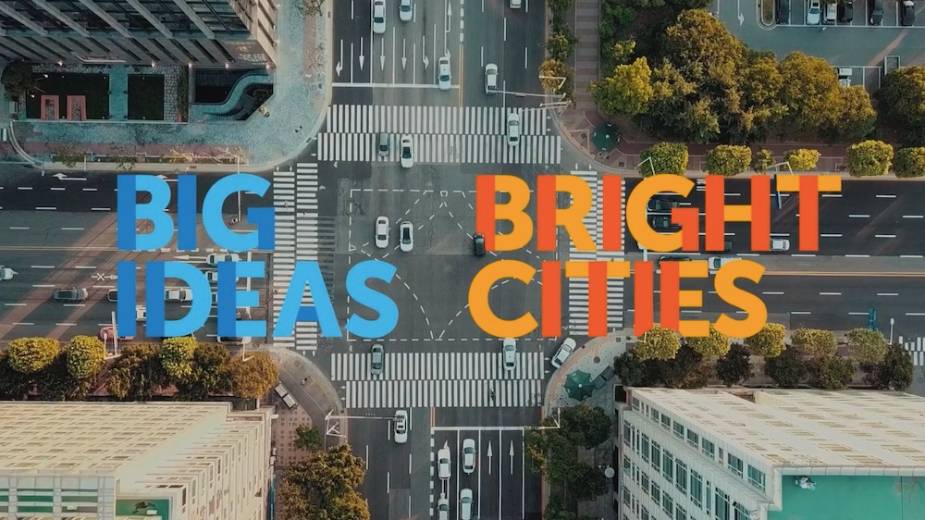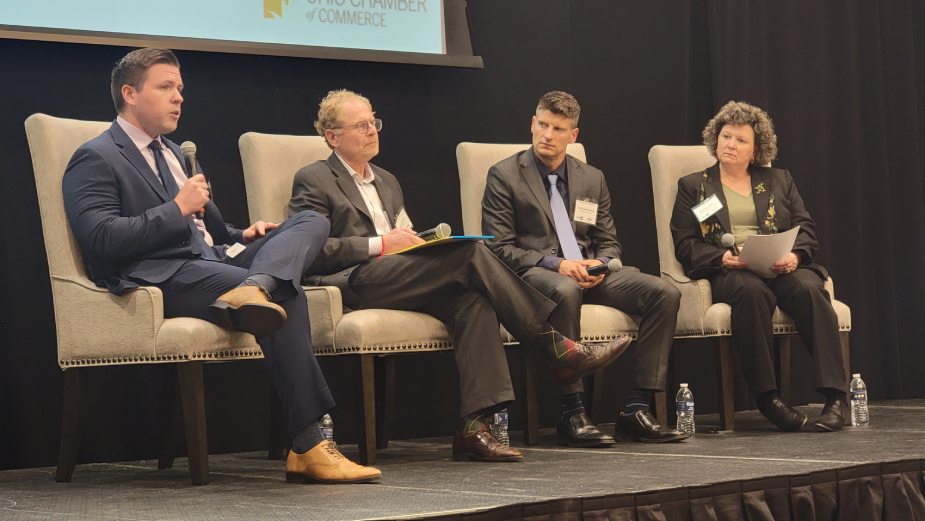Building a Team, a Company and a Plant: Ultium Job Fair Draws Interest
NILES, Ohio — Frank Peacock was among the first to lose his job when General Motors began phasing out shifts at its Lordstown assembly complex in January 2017.
More than four years later, Peacock hopes to return to work in Lordstown – this time employed at Ultium Cells LLC’s $2.3 billion electric-vehicle battery manufacturing plant under construction near the former GM plant.
“I went to school for electrical technologies, and I have an interest in that,” he said. “I’m just trying to find a decent job.”
Peacock was among more than 150 people who crowded the Eastwood Event Centre lobby on May 26 to attend informational sessions about potential jobs with Ultium.
Ultium, a joint venture between GM and Korea-based LG Energy Solution, hosted the career fair to give potential job applicants a better understanding of the new company and the nature of the work it does, said Tom Gallagher, Ultium chief operating officer.
“There’s generally not a clear understanding of the work that’s involved in making a battery cell,” he said. “We’ve got to educate the community because we want to hire locally, and we’re committed to training people so they can excel in this space.”
Ultium batteries produced at the plant will be used to power a variety of GM vehicles as the automaker accelerates its move into the EV market. GM has said it wants to achieve an all-electric portfolio by 2035.
Peacock worked at the Lordstown assembly plant for about a year but had not accumulated enough seniority to weather the first round of layoffs or transfer to another plant.
“I was in the trim department,” he noted.
He did, however, enroll in training opportunities after he was placed on layoff. This enabled him to receive credentials in electrical technologies. “I’m hoping that it could payoff,” he said.
Peacock is also encouraged about the possibility of the United Auto Workers organizing the plant.
On Tuesday, GM said in a statement that it was open to the UAW’s efforts to unionize Ultium plants in Lordstown and another one planned for Spring Hill, Tenn.
GM shut its Lordstown assembly plant down in March 2019 and then sold it to startup Lordstown Motors Corp. in November of that year.
Linda Noday is also a refugee from the Mahoning Valley’s storied automobile manufacturing past.
“I used to work at Delphi years ago,” she said. “I had to take the buyout because I was very young and low on the totem pole.”
Delphi, a former parts division for GM that was spun off in 1999, filed for Chapter 11 bankruptcy in 2005 and reduced its workforce by offering one-time separation buyouts to employees. The company once employed as many as 14,000 at its North River Road complex in Warren; today it employs less than 600.
Noday emphasized that she enjoys working in the trades and also worked in the battery plant while at Delphi. “This is kind of like what I used to do,” she said. “So it definitely interested me.”
Gallagher said the company is in the process of hiring its launch team, now numbering 50, which should reach about 200 by the end of the year. Next year, the plant will start to hire its production workforce and continue that process through 2022. By the end of that year, the plant expects to employ more than 1,100.
“As we begin into next year, we will be filling our first shift,” Gallagher said. Among these positions are production associates, operators and team leaders, industrial maintenance positions and quality engineers.
Wages would range between $16 and $22 per hour and new employees would undergo weeks of training in Michigan and Ohio. Most of the applicants should have some basic math and computer skills.
That’s because the work at Ultium is more technical than a traditional manufacturing line, Gallagher said. “It’s set up so if you have a desire to learn and want to apply, you can be successful,” he said.
Construction of the plant is right on schedule and 1,200 tradesmen are on site during the building phase. “As we get to the installation phase of the equipment, there will be even more people involved with the construction and installation process,” he said. “We’re creating jobs today.”
New equipment should be arriving soon, and the first installations should begin sometime in August, Gallagher said.
The first phase slated for completion is the plant’s mixing operations, which combines raw materials such as lithium, carbon and nickel to produce electrode sheets for Ultium batteries. These mixtures are separated into two slurries – one that is applied with a negative charge that would make the cathode, and the other with a positive charge that makes the anode.
The electrode sheets are stacked three high with separators between each sheet to form a bi-cell. These bi-cells are then laminated and cut to specific dimensions. The cells are aged for an average of 30 days, then activated and charged.
Once the cells are ready, they’ll form a battery pack used in new EVs such as the new GMC Hummer and Cadillac Lyriq set for launch next year. “Our customer makes the packs and modules,” Gallagher said.
Others attending the event Wednesday are especially intrigued about returning to a position in manufacturing.
Lashaun Murry said she had worked at Dinesol Plastics for “a long time” but is no longer employed there. She wanted to learn more about Ultium and its goals and objectives.
“It definitely seems like a really nice job,” Murry said. “I’ll need a job in between, though since they won’t start hiring until next year.”
For Ultium, career fairs such as these help introduce the company to the community and are integral to creating a strong, skilled workforce. Several other career fairs would be scheduled throughout the year.
“We’re building a team, we’re building a business and we’re building a plant,” Gallagher said.
Pictured: Tom Gallagher, chief operating officer of Ultium Cells.
Copyright 2024 The Business Journal, Youngstown, Ohio.



